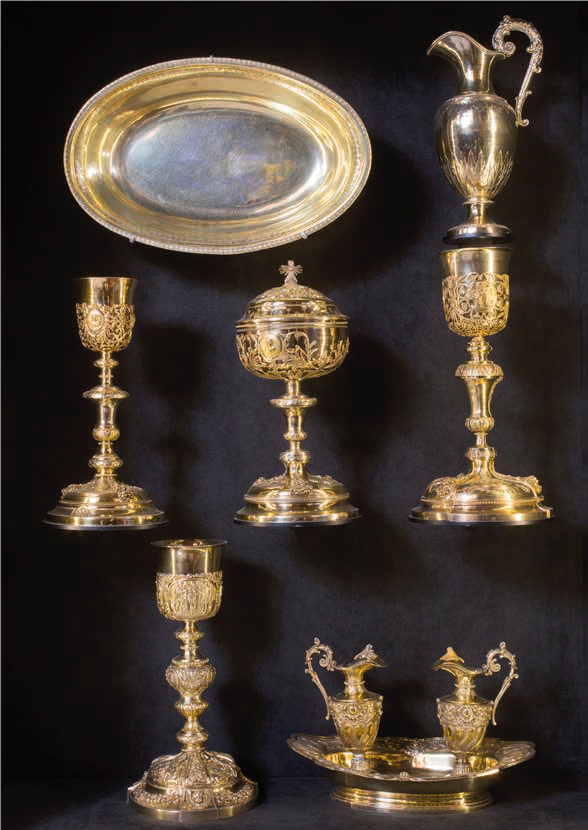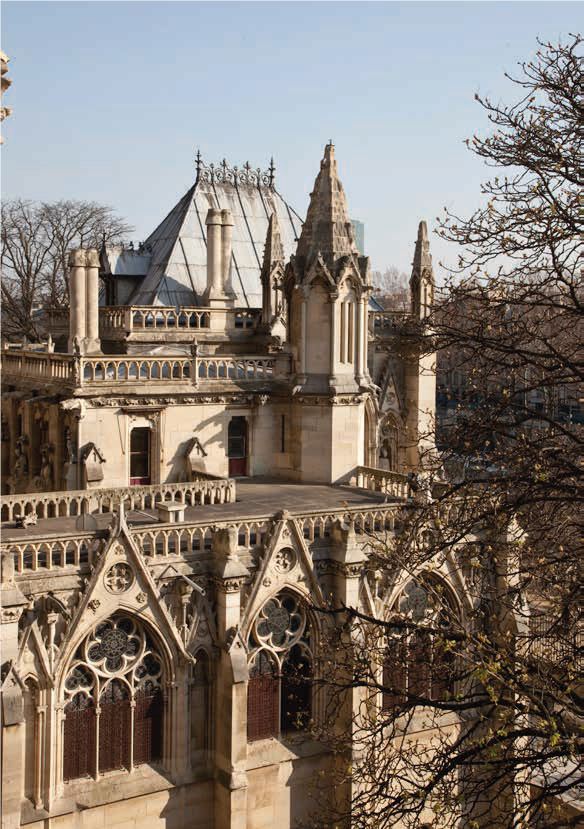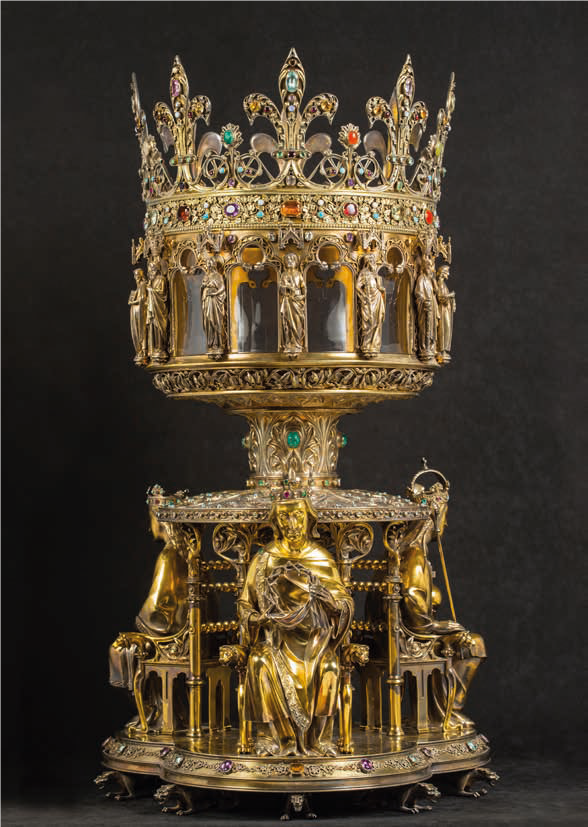The Goldsmith’s Treasure

The “Treasure of Notre-Dame”: three words for 2000 unique objects, pieces of goldsmithery and liturgical textiles, which form the cathedral’s impressive collection. Before the fire, 200 of these items were exhibited in the sacristy, behind the windows of historical furniture designed by Viollet-le-Duc in the 19th century. 300,000 visitors came to admire them each year. This golden heritage was honoured by a route tracing the evolution of sacred art from the 13th to the 21st century, for the most recent pieces.

On the evening of the tragedy, while the firefighters were battling the flames on the roof, a ground operation was organised to evacuate as many artworks as possible, starting with the major Treasure items. The next day, all the collections were transferred to external reserves. They are now waiting to reintegrate the building.

A project for the Treasury
This offers a great opportunity to rethink the Treasury in terms of meaning and staging, but also accessibility for the public. The project thus provides for opening the entire cloister to visitors and creation of showcases to exhibit some of the objects kept in the reserves. A dedicated committee will guarantee the relevance of the chosen works, the coherence of the discourse and content of the interventions to come. This work should extend over a year, with an estimated budget of 370,000 euros.

A brief history of the Treasury…
Since construction started on the building in 1163, the Treasury of Notre-Dame has often received wonderful donations. From the 14th century, inventories describe the richness of this exceptional collection, the bulk of which come from the patronage of sovereigns and influential characters across the kingdom. These donations enriched the cathedral and replenished its losses, due to the financial demands of the monarchy, which sometimes justified the melting down of precious objects (especially in times of war).
It is no wonder that this treasure, which symbolised the prosperity of the Ancien Régime, enjoyed immense renown at the end of the 18th century. It reflected the splendour of the Court, the generosity of the authorities and the clergy, as well as the corporations which had dedicated chapels inside the building.

A point of no return and brutal rupture, the Revolution completely emptied the Treasury of Notre-Dame. The nationalisation of property (2 November 1789), the confiscation and melting down of objects not used for worship (3 March 1791), then of the objects of worship themselves (10 September 1792) would mark the end of this rich collection, precisely described by the inventories of the revolutionary administration. Of the old Treasury, nothing remains or is known of today.
The Napoleonic ceremonies and decisive arrival of the relics of the Sainte Chapelle in 1806 would restore some of its brilliance; but it was not until the 19th century, during restoration work carried out by Lassus and Viollet-le-Duc, that it was reconstructed in the premises of the new sacristy, built between 1845 and 1849.

Viollet-le-Duc would design, not only the display furniture, but a number of sacred objects, vases, lanterns, candlesticks and crucifixes, which he had made by great craftsmen of his time. Beyond the pastiche of medieval forms, these items are genuine creations, especially the monumental works such as the large lectern, the Paschal candlestick and the reliquary of the Crown of Thorns, damaged during the fire.

Throughout the second half of the 19th century, the Treasury continued to gather new riches. In 1905, following the Law of Separation of Church and State, the whole cathedral’s property was nationalised. The 20th century continued the enrichment through donations of all kinds, but also and above all, through commissions from the Church that, continuing a long tradition, has always supported contemporary creation, “today’s art”, as a vector of its spirituality.

I make a donation for the renovation of the Treasury of Notre-Dame
© Photos Notre-Dame de Paris